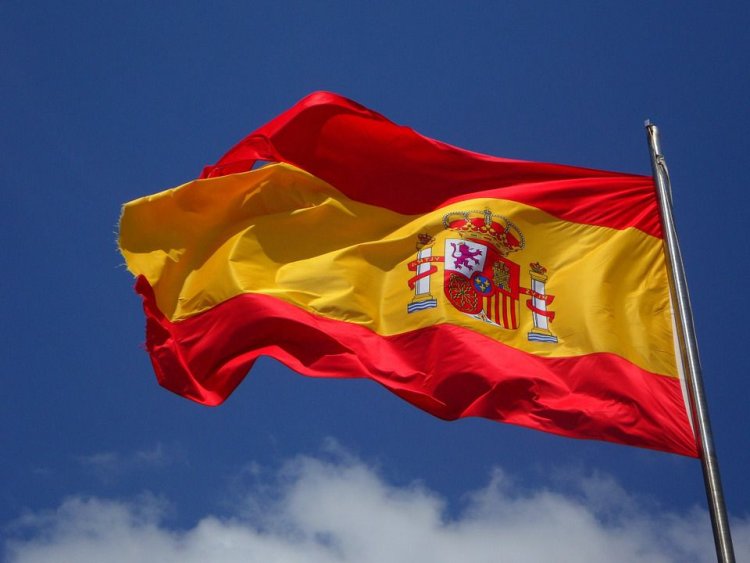15 curiosities about Spain that will surprise you
15 curiosities about Spain that will surprise you - How well do you know Spain? Here are 15 curiosities that will surprise you!

How well do you know Spain? Here are 15 curiosities that will surprise you!
All of us, more or less, think we know our Spanish neighbors well.
In reality, there are many truths that remain unknown to most, from the Blue Flags of its beaches, to the UNESCO heritage sites found there and much more... Here are the 15 curiosities about Spain that will surprise you!
1. Fact about Spain: It is said to be the second most mountainous nation in Europe
This statement may or may not be true: it's a widespread belief on the Internet, but official sources don't seem to agree.
Despite this, a curiosity about Spain is that it is undoubtedly rich in mountain ranges, many of which are probably unknown to most.
The Pyrenees, the Sistema Central, the Sierra Nevada, the Picos de Europa, the Sistema Ibérico and so on: the List could go on for much longer.
Absolutely to visit the Sierra Nevada in Andalusia, which is the southernmost ski resort in Europe, and which allows you to ski while enjoying spectacular sunny days, especially at the end of the winter season.
2. Curiosity about Spain: it is in third place in the world for the number of UNESCO sites
In Spain there are 47 sites inscribed on the UNESCO World Heritage List, and 31 are pending.
This is especially due to the fact that Spain has been home to many different civilizations throughout history – Celts, Iberians, Greeks, Phoenicians, Romans, Visigoths, Moors – and each of them has left its mark.
Among these 47 sites, you will find palaces such as the Alhambra in Granada, medieval cities such as those of Santiago de Compostela and Salamanca, Paleolithic paintings in Altamira, and many Roman ruins.
3. A lighthouse and dam built by the Romans are still used today
Speaking of the Romans… They have always been lauded for their engineering skills and we have proof of it: the Tower of Hercules in A Coruña, built in the second century, is the only lighthouse in the world from the Roman era preserved (also thanks to a occurred in 1788) and functioning.
And then, near Mérida, the "Embalse de Proserpina" is the second oldest dam in the world still in use. It was even built in the 1st or 2nd century AC.
4. Trivia about Spain: You've seen several of its landscapes in the most unthinkable movies
Do you remember Doctor Zhivago? All that snow creating that atmospheric background for Omar Sharif and Julie Christie? Have you thought about the typical Russian landscape? Mistaken.
The film was shot in Soria, Spain, and "Moscow" was created in the suburbs of Madrid. The desert of Almería, on the other hand, was the recording ground for some of the most famous Western films (The Good, the Bad and the Ugly, for example).
Curiosity about Spain for all Game of Thrones fans: do you recognize the tower of the Castle of Zafra, in the photo? It appears instead in the tenth episode of the sixth season!
5. Fun fact about Spain: there is the largest number of beaches in the world with the Blue Flag
In 2015, 578 Spanish beaches were awarded the Blue Flag, a certification that is given only if certain standards of water quality, safety and environmental management are met.
Spain has 3000 miles of coastline and that means there are beaches aplenty.
Those located on the Mediterranean coast – in Catalonia, the Community of Valencia, Murcia, half of Andalusia and the Balearic Islands – have warmer water; those on the Atlantic coast - Galicia, the Canary Islands and the other half of Andalusia - are particularly colder, but still suitable for swimming.
6. Interesting facts about Spain: You can practice all kinds of sports here
Surfing? Climbing? Scuba diving? Paragliding? Choose what you want. The diversity of landscapes and nature present in Spain will allow you to practice all kinds of extreme and outdoor sports.
Water sports such as surfing or jet skiing are popular in all coastal places; if you are looking for big waves, you will certainly find them in the Basque Country, Galicia and the Canary Islands.
You can ski and snowboard in places like the Sierra Nevada or the Pyrenees (places much cheaper than other European ski destinations).
Rock climbing is famous everywhere, but especially in the Picos de Europa, in Cantabria and Asturias, in the Costa Blanca in Alicante, in El Chorro in Andalusia, in the Sierra de Albarracìn in Teruel, and in the Canary and Balearic archipelagos.
7. Interesting facts about Spain and the Spaniards: it is the second country with the highest life expectancy
According to the World Health Organization, Spain has a life expectancy of 83 years – only the Japanese live longer.
Experts say this is due to their healthy diets, health care system, spending a lot of time with friends and family, and their sense of community.
If you try to ask any Spaniard, any of them will tell you that the secret lies in what they call their "quality of life" and in the fact that they "work for a living" and not the other way around.
Go to a cafe, sit there with your friends and have a beer or a coffee, and three hours later you will understand all this.
8. Spanish gastronomy is much more than paella (which is from Valencia, by the way)
Here is a trivia about Spain that will amaze many. Paella isn't all that famous outside of Valencia, and its locals will tell you that what we call paella, in the rest of Spain, has nothing to do with the original dish.
Each region has its beloved dishes: calçotadas in Catalonia, cocido in Madrid, pulpo à feira in Galicia, pescaìto frito in Andalusia and marmitako in the Basque Country.
Built on fresh vegetables, fish, pork and beef, and olive oil (no one cooks with butter here), Spanish cuisine is a winning mix of Mediterranean and Atlantic diets, with influences from Moroccan cuisine in the south.
9. The oldest restaurant in the world is in Madrid
Sobrino de Botìn opened in 1725 as Casa Botìn, and, even if it is not the oldest restaurant ever, it is certainly the oldest still open, complete with a certificate from the Guinness Book of Records.
Ernest Hemingway was a regular when he lived in Madrid – he mentioned the restaurant in Fiesta, The Sun Will Rise Again – and Spanish painter Francisco de Goya said he worked there as a waiter.
10. Every year, more than 200,000 pilgrims walk in Spain to Santiago de Compostela
The Camino de Santiago has become one of the most important Christian pilgrimages since the ninth century, when what appeared to be the remains of the Apostle James were discovered in Compostela.
Today it is both a European Cultural Route and one of the UNESCO sites, and, although it was born as an exclusively religious path, today it is traveled by travelers driven by various motivations.
It can be a cultural experience, a way to find yourself, or simply a journey to meet new people and travelers from all over the world.
11. Bar culture is widespread (also) here
You may have heard that Spain has a high bar-per-capita ratio (a 2013 study estimated that there are about one bar for every 132 people in Spain), but it's important to understand what is meant by "bar" in Spain.
People go to the bar for breakfast, for their coffee break, for lunch, to get a snack, and even for dinner.
Some bars are practically restaurants, others look almost like nightclubs, and many others are classic bars with different types of coffee and tea to choose from. In short, there is something for all tastes!
12. Spain trivia: You can get to Portugal by ziplining
Did you know that it is possible to zipline from Spain to Portugal? You can do it starting from Sanlúcar de Guadiana, Andalusia.
Take the Lìmite Zero zipline over the Guadiana River and in 60 seconds you'll be in Alcoutim, Portugal.
This line is the first in the world to cross a border!
13. Spain has produced artists since the Paleolithic period
Here's a curiosity about the Spain of the artists: Goya, Picasso and Gaudì? They are newcomers compared to the unknown artists who left their paintings in the caves of Altamira.
Discovered in 1879, there is still no scientific agreement as to when the paintings and drawings were made, but the latest study suggests they could be around 35,600 years old.
After being closed to the public for a few years, they have recently reopened. Only 5 people a week can visit the paintings, but there is a cave that replicates them and a museum on site.
14. Interesting facts about Spain and Festivals: There are more festivals in Spain than days in the year
It doesn't matter when you decide to travel to Spain, there will always be some festival to attend.
La Tomatina, Las Fallas and San Fermìn are probably the most famous, but each town has its patron saint, who is celebrated for at least a couple of days with music and traditional clothes.
Some of these fiestas are wonderfully extravagant (kids jumping into El Colacho, meringue wrestling in San Sebastiàn or mock funerals in Santa Marta de Ribarteme), while others simply involve food, traditional games and dancing.
15. You don't have to go to big cities to understand what Spanish nightlife means
If Spain were a person, she would be described more as a night owl than an early riser.
We tend to do things later: we have lunch around 2pm, dinner at 10pm and in the evening we start dancing at 2am.
And this happens practically everywhere, not just in big cities like Madrid or Barcelona.
Wherever you are, ask people what they do in the evening for fun and you will be directed to specific streets full of bars (of those that double as nightclubs), a discotheque, or perhaps the neighboring town.
Nightlife in Spain can be as fun in the villages as it is in the big cities.

















